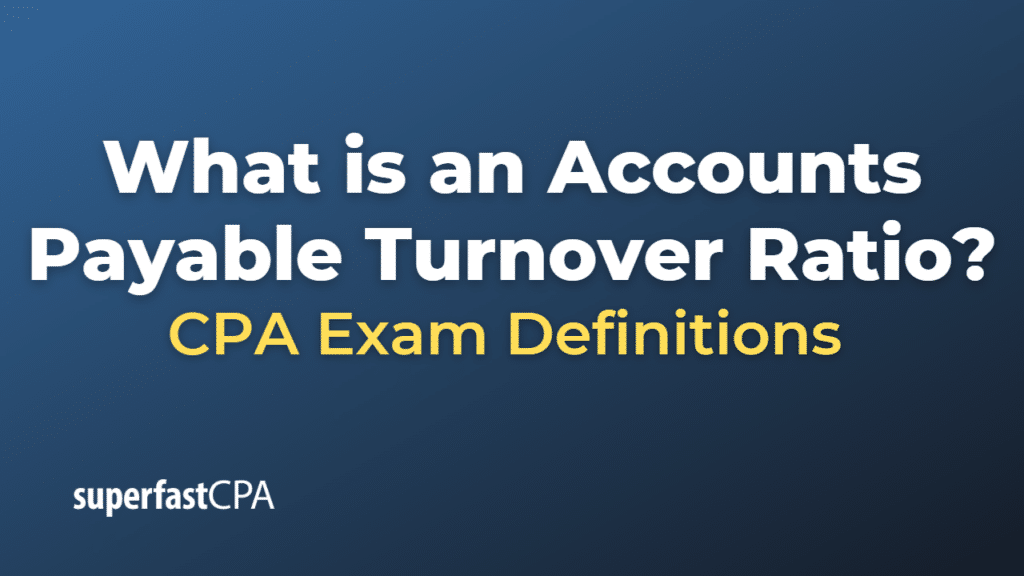Accounts Payable Turnover Ratio
Accounts Payable Turnover Ratio is a financial metric that measures how frequently a company pays its suppliers within a specific period. This ratio helps assess the efficiency of a company’s cash flow management and its ability to meet short-term obligations, as well as its relationships with suppliers. A higher ratio indicates that the company pays its suppliers more frequently, while a lower ratio suggests it takes longer to pay its bills.
The formula for calculating the Accounts Payable Turnover Ratio is:
Accounts Payable Turnover Ratio = Cost of Goods Sold (COGS) / Average Accounts Payable
Where:
- Cost of Goods Sold (COGS) is the total cost of producing or purchasing the goods sold by the company during the accounting period.
- Average Accounts Payable is the average balance of accounts payable during the accounting period. It can be calculated as (Beginning Accounts Payable + Ending Accounts Payable) / 2.
When analyzing the Accounts Payable Turnover Ratio, it’s important to consider industry norms and the company’s historical performance. Comparing the ratio to industry benchmarks or the company’s historical data can provide insights into the company’s cash flow management and competitiveness within the industry.
Example of an Accounts Payable Turnover Ratio
Let’s consider a fictional company called “Fresh Bakery,” which specializes in producing and selling freshly baked goods. We’ll use the Accounts Payable Turnover Ratio to evaluate the company’s efficiency in managing its accounts payable.
Here’s the financial data for Fresh Bakery:
- Cost of Goods Sold (COGS) for the year: $900,000
- Beginning Accounts Payable for the year: $100,000
- Ending Accounts Payable for the year: $150,000
First, let’s calculate the Average Accounts Payable:
Average Accounts Payable
- = (Beginning Accounts Payable + Ending Accounts Payable) / 2
- = ($100,000 + $150,000) / 2 = $250,000 / 2
- = $125,000
Now, let’s calculate the Accounts Payable Turnover Ratio:
Accounts Payable Turnover Ratio
- = COGS / Average Accounts Payable
- = $900,000 / $125,000
- ≈ 7.2
The Accounts Payable Turnover Ratio for Fresh Bakery is approximately 7.2, which means that the company pays its suppliers about 7.2 times per year on average, or roughly once every 50 days (365 days / 7.2).
To put this number into context, Fresh Bakery should compare its Accounts Payable Turnover Ratio with industry benchmarks or its historical performance. If the industry average is around 8, then the company’s ratio of 7.2 is slightly lower, which might indicate slower payments to suppliers compared to competitors. Conversely, if the industry average is lower, say 6, it could indicate that Fresh Bakery is more efficient in managing its cash flow and maintaining good relationships with suppliers by making timely payments.













